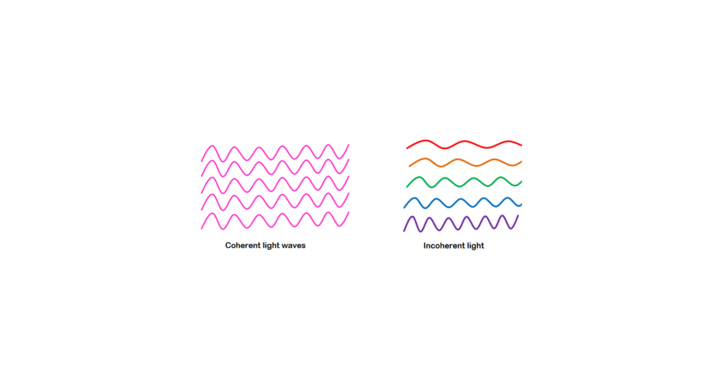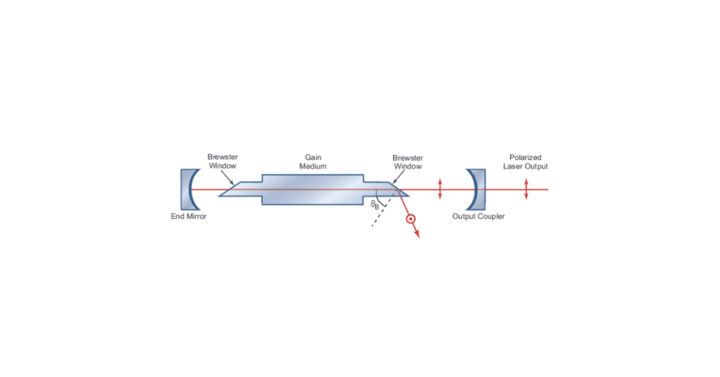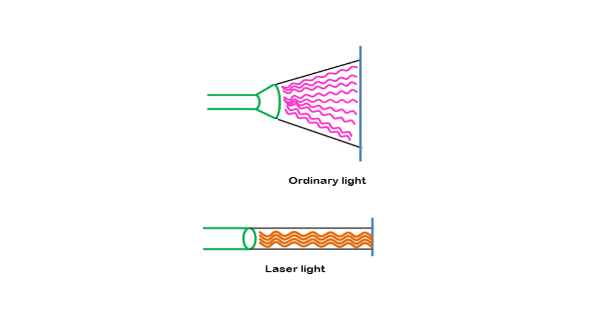- Home/
- GATE ELECTRONICS/
- GATE EC/
- Article
Characteristics of Laser
By BYJU'S Exam Prep
Updated on: September 25th, 2023

Laser physics is the discipline of optical physics that deals with the theory and application of lasers. This field of physics serves as the foundation for quantum electronics. Laser is one of the major technological breakthroughs of the twentieth century. It is significant in basic sciences, but especially in diagnosing and treating numerous pathological disorders of the human body.
Lasers differ from light sources such as electric bulbs, sun, etc. There are some characteristics of lasers that make them different from other light sources. This article discusses the salient characteristics of the laser beam along with its advantages, disadvantages, and applications.
Table of content
What is a LASER?
Light Amplification by Stimulated Emission of Radiation (LASER) produces narrow beams of light in a small spectrum of visible, infrared, and ultraviolet wavelengths.
Laser Definition
A laser is a device that can energize atoms or molecules to emit electromagnetic radiation of a specific wavelength and amplify it so that a narrow beam of light is produced.
Principle of Laser
Lasers work on the principle that when an atom or molecule gets energy, they move from the lower energy state to a higher energy state. When the number of atoms in the higher energy state is much more than the number of atoms in the lower energy state, it is known as population inversion. When the atoms or molecules return to the lower energy state, they emit photons resulting in a laser.
Characteristics of Laser
The coherent amplification process produces laser light with a unique set of characteristics. All these characteristics of lasers are interrelated. The most common output characteristics of lasers are as follows:
- Wavelength
- Gain Bandwidth
- Monochromaticity
- Coherence
- Polarization
- Directionality
- Output power
- Collimation
- Spatial and Temporal Profiles
Out of the following characteristics mentioned, the essential characteristics of a laser beam that differentiate laser from other light sources are Coherence, Monochromaticity, Directionality, Output power, and Wavelength.
Wavelength
The wavelength of the laser is determined by the laser medium, which provides optical transition. The wavelength range extends from the ultraviolet (UV: 100 nm to 400 nm) to the mid-infrared (MIR: 2 μm to 8 μm). All laser wavelengths can be converted or shifted to reach UV to MIR spectral regions, known as spectral tunability.
Due to spectral tunability, laser systems can be employed for short-wavelength and long-wavelength applications. Short-wavelength applications include photolithography for semiconductor processing, etc., and long-wavelength applications include material processing, molecular spectroscopy, etc.
Gain Bandwidth
The bandwidth of the laser medium determines the range of wavelength. Several electronic transitions overlap in the frequency band, leading to broader frequency bands. The bandwidth is primarily determined by the bandwidth over which stimulated emission occurs. The gain bandwidth is not the same as the bandwidth of the laser beam since that will also depend on the resonator present in the laser system.
Typical bandwidths for a selective gain of He-Ne laser and Nd-YAG laser is shown below:

Monochromaticity
Monochromaticity refers to a light containing a single color or single wavelength. In a laser, the emitted photons have equal energy; hence, light waves generated will have the same wavelength and frequency. It is also referred to as spectral bandwidth or laser linewidth.
Coherence
Emitting photons is known as electron transition, when electrons fall from the higher energy state to a lower energy state. In a laser, this electron transition occurs at a specific time because the emitted photons have the same energy, wavelength, and frequency. The wavelength of the laser is in phase in space and time. Thus, light generated by the laser is known to be coherent.

Polarization
The direction of oscillation of an electromagnetic wave of light is referred to as polarization. When the direction of oscillation of the wave is perpendicular to the direction of propagation, the polarization is known as linear polarization. Several laser-based applications, such as optical communication, and interferometry, need a linearly polarized source. As a result, a laser should be linearly polarized.
If the laser gain medium is polarization-dependent, as with some solid-state lasers, a single linearly polarized beam can be created within the laser cavity. Another approach is to incorporate a polarization-selective component into the resonator, as shown below:

Directionality
In a laser, all the photons are emitted with the same energy and in the same direction. Due to this, the width of the laser beam is extremely narrow. Due to less spreading, laser waves can travel large distances with almost no losses, known as the directionality of laser.

Output Power
The average power output of a laser is in the order of watts (W) or kilowatts (kW). For a continuous wave laser, the power output is constant over time, but for the pulsed wave laser, the output power is the product of the energy of the output wave and repetition rate.
The peak output power is proportional to the energy of the output wave divided by the pulse width. Lasers can confine this power into a narrow beam with relatively small distribution, distinguishing the laser from the other light sources. Continuous-wave lasers have an average output power of less than 100 W.
Collimation
Photons in collimated light are highly directional and travel parallel to one another. The high degree of collimation of a laser beam is caused by the parallelism of the cavity mirrors, which compels the beam to be perpendicular to those mirrors.
This capability to precisely concentrate laser light to a small spot at a high intensity is used in high-resolution microscopy, nonlinear optics, photolithography, and nuclear fusion.
Spatial and Temporal Profiles
The intensity distribution of beams that emerge from a laser cavity has both a transverse spatial profile and a temporal profile. Adjustments to the laser cavity mirrors and installing an aperture inside the resonator can be utilized to suppress undesirable modes selectively.


